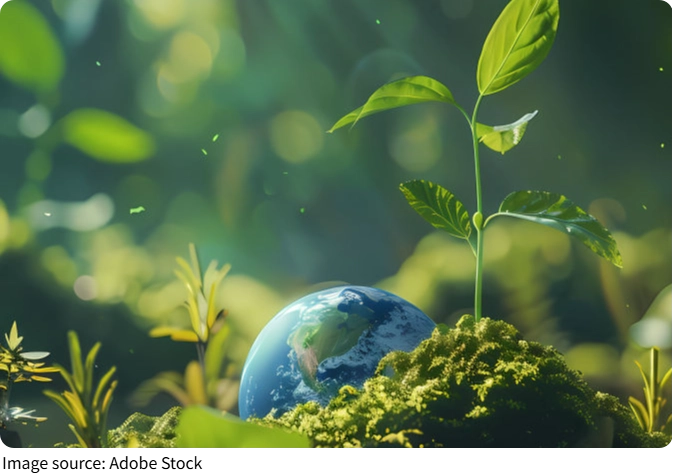Earth's Plate Theory

Ever wondered why mountains rise and oceans sink? Or why earthquakes shake the ground beneath our feet? The answer lies deep within the Earth, where forces we can't see shape the very land we walk on.
This is the science of plate tectonics—the theory that explains how Earth's outer shell, called the lithosphere, is divided into several massive pieces, or plates, that float on the molten mantle beneath.
Let's explore how this theory changed our understanding of the Earth and why it matters today.
Understanding Earth's Structure
Earth's structure is made up of several distinct layers, each with its own properties and behavior. These layers work together, creating a dynamic system that drives geological activity such as earthquakes, volcanic eruptions, and mountain formation.
1. Crust: The outermost layer of Earth, the crust is solid and relatively thin compared to the other layers. It is divided into two types: oceanic crust (which forms the ocean floors) and continental crust (which makes up the continents). The crust is where all life exists, and it is also home to the tectonic plates.
Example: The oceanic crust is denser and thinner than the continental crust, which is why oceanic plates tend to subduct (go beneath) continental plates during plate movements.
2. Mantle: Beneath the crust lies the mantle, which extends to about 2,900 kilometers below the Earth's surface. Unlike the rigid crust, the mantle is semi-solid and behaves like a thick, slow-flowing liquid over long periods. The heat from the core causes convection currents in the mantle, driving the motion of tectonic plates on the surface.
Example: These convection currents are the driving force behind plate movements, causing the plates to slowly shift over time, sometimes colliding, separating, or sliding past each other.
3. Outer Core: The outer core is liquid, composed mainly of iron and nickel, and is responsible for generating Earth's magnetic field. It's extremely hot, with temperatures reaching over 4,000°C.
4. Inner Core: The innermost layer is solid, made of iron and nickel, and as hot as the surface of the sun. The inner core remains solid due to immense pressure, despite its high temperature.
The Birth of Plate Tectonics Theory
For centuries, scientists noticed that continents seemed to fit together like pieces of a jigsaw puzzle. The coastlines of South America and Africa, for instance, looked as if they once belonged to the same landmass. But it wasn't until the mid-20th century that the theory of plate tectonics began to take shape.
The breakthrough came from the work of Alfred Wegener, a German meteorologist and geophysicist, who proposed the theory of continental drift in 1912. He suggested that continents were once part of a supercontinent called Pangaea and had drifted apart over millions of years. However, Wegener couldn't explain how or why the continents moved, leaving his theory unaccepted at the time.
The real turning point came in the 1960s, when the development of new technology allowed scientists to study the ocean floor. They discovered that the seafloor was spreading, with new oceanic crust being created at mid-ocean ridges and older crust being pushed away. This process, combined with the discovery of subduction zones where oceanic crust was being destroyed, provided solid evidence for plate tectonics.
Example: The discovery of magnetic striping on the ocean floor showed that the Earth's magnetic field had flipped back and forth over time, creating symmetrical patterns of magnetic anomalies on either side of mid-ocean ridges. This was strong evidence for seafloor spreading, a key part of plate tectonics.
The Movement of Tectonic Plates
Tectonic plates are massive pieces of Earth's lithosphere that float on the semi-fluid mantle beneath. These plates move slowly, at rates of a few centimeters per year, but over millions of years, their movements can lead to massive changes in the Earth's surface.
1. Divergent Boundaries: Plates move apart, creating new crust. This happens at mid-ocean ridges where magma rises to form new oceanic crust.
Example: The Mid-Atlantic Ridge is a divergent boundary where the Eurasian and North American plates are moving apart, creating new ocean floor.
2. Convergent Boundaries: Plates collide, and one may be forced beneath the other in a process known as subduction. This can create mountains, volcanoes, or deep ocean trenches.
Example: The Himalayas were formed by the collision of the South Asian and Eurasian plates, causing the Earth's crust to fold and rise into some of the tallest mountains in the world.
3. Transform Boundaries: Plates slide past one another, often causing earthquakes. These boundaries are found along fault lines.
Example: The San Andreas Fault in California is a transform boundary where the Pacific and North American plates slide past each other, often causing earthquakes.
Why Plate Tectonics Matters
Plate tectonics is more than just a theory—it's the backbone of Earth's geological activity. The movement of tectonic plates shapes everything from mountain ranges to ocean basins, and understanding this process helps us predict natural disasters like earthquakes and volcanic eruptions.
The theory of plate tectonics also helps explain the distribution of natural resources. For example, mineral deposits, fossil fuels, and even water reserves can be influenced by the movement of tectonic plates, as they control the location of resources deep within the Earth.
Example: The oil-rich regions in the Middle East are located near tectonic boundaries, where ancient geological processes have created reservoirs of oil and gas. Understanding plate tectonics allows for better exploration and extraction of these resources.

Adapting to Plate Movements
While we can't stop the plates from shifting, we can learn to live with their movements. Advances in building technology have allowed us to construct earthquake-resistant buildings, while scientists are working on improving early warning systems to give people time to evacuate before an earthquake strikes.
In areas prone to volcanic eruptions, monitoring systems can help predict eruptions, saving lives and minimizing damage. Understanding plate tectonics has already proven to be a powerful tool for predicting and preparing for natural disasters.
The Earth's tectonic activity is an ongoing process that shapes our planet, creating both challenges and opportunities. By understanding how the plates move, we gain valuable insights into Earth's past, present, and future.

 · Astronomy Team
· Astronomy Team